Scale degrees are essential elements in the world of music theory and production.
They can define the emotion of a song, dictate its harmonic flow, and help you create memorable melodies and chord progressions.
As a music producer, it’s important to know all about scale degrees to create tracks that resonate with your audience and stand out over your competition.
In today’s article, we’ll be breaking down:
- What a scale degree is ✓
- Major and minor scale foundations ✓
- Emotional impacts of major vs. minor scales ✓
- The meaning of different scale degree names/note names ✓
- Application of scale degrees in melodies ✓
- Harmonization techniques ✓
- Rhythmic variations and their significance ✓
- Advanced concepts like modulation and chromaticism ✓
- Textural depth in chords ✓
- Key signature experimentation ✓
- Much more about scale degree knowledge ✓
By the end, you’ll have a solid understanding of scale degrees.
This way, you’ll be able to create intricate, emotionally charged music and manipulate scale degrees like a professional.
Whether you’re layering harmonies, designing leading melodies, or exploring new tonalities, this knowledge will elevate your music production skills to new heights.
So, let’s dive in…
Table of Contents
What are Scale Degrees & Why Do They Matter?
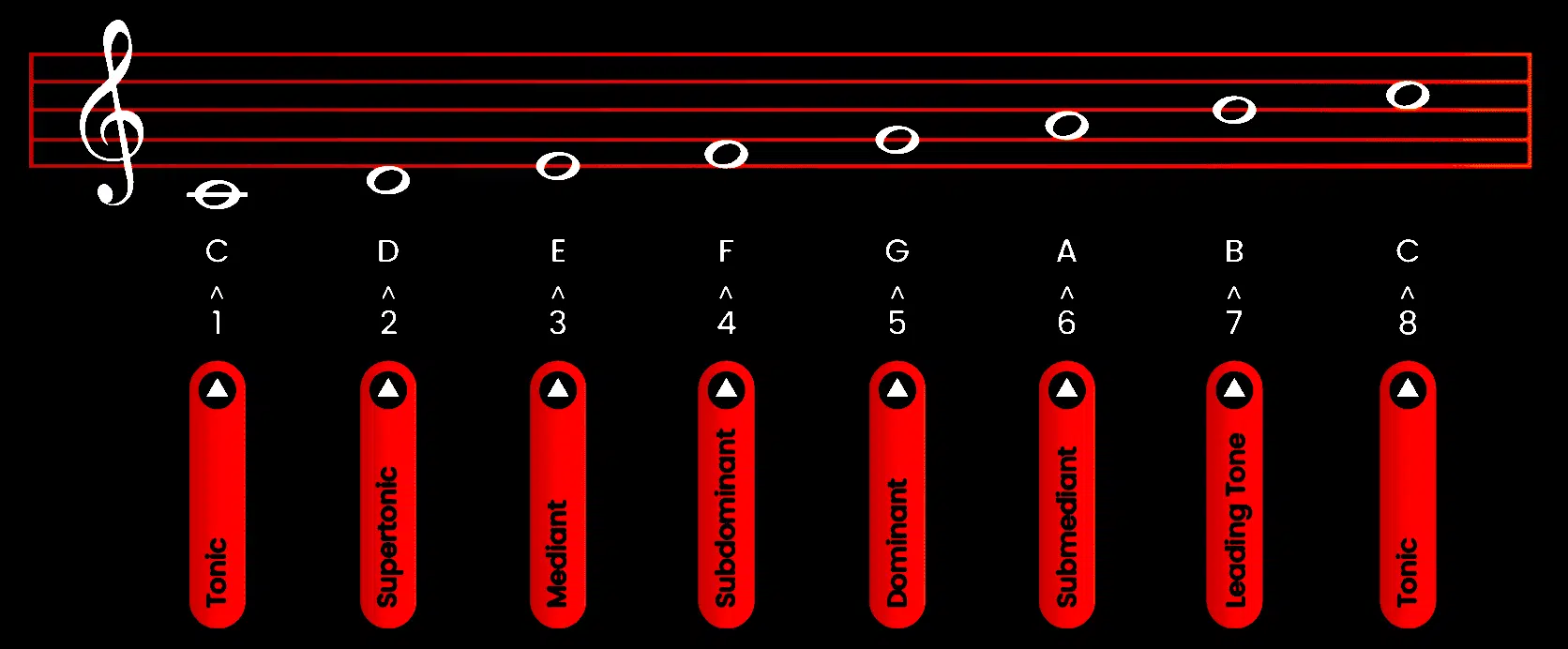
Scale degrees are the nucleus of music theory, helping you to expertly create tracks that can emotionally resonate and seriously captivate.
As a music producer, knowing about scale degrees isn’t just a technical requirement 一 it’s the key to more expressive and impactful music creation.
Each degree of the scale plays a unique role in shaping the melodic and harmonic characteristics of your tracks.
Whether you’re creating a soaring lead, a compelling chord progression, or a groovy bassline, scale degrees are your secret weapons.
Without understanding scale degrees, your ability to communicate emotion and intention in music is limited.
They are the difference between a random collection of notes and a melody that is irresistible to your listeners.
Mastering scale degrees will enable you to create tension, release, and emotion in your tracks every single time; it’s essential for any successful track to gain that mass appeal.
Don’t worry, we’ll be breaking down everything in detail so you get a better understanding.
The Foundation: Major and Minor Scales
Understanding the foundational elements of major and minor scales is critical in mastering scale degrees. It’s more than scale degree names, it’s all about really understanding the emotions these scales evoke. And all the different elements included, of course.
-
Understanding Major Scales/Major Scale Degrees
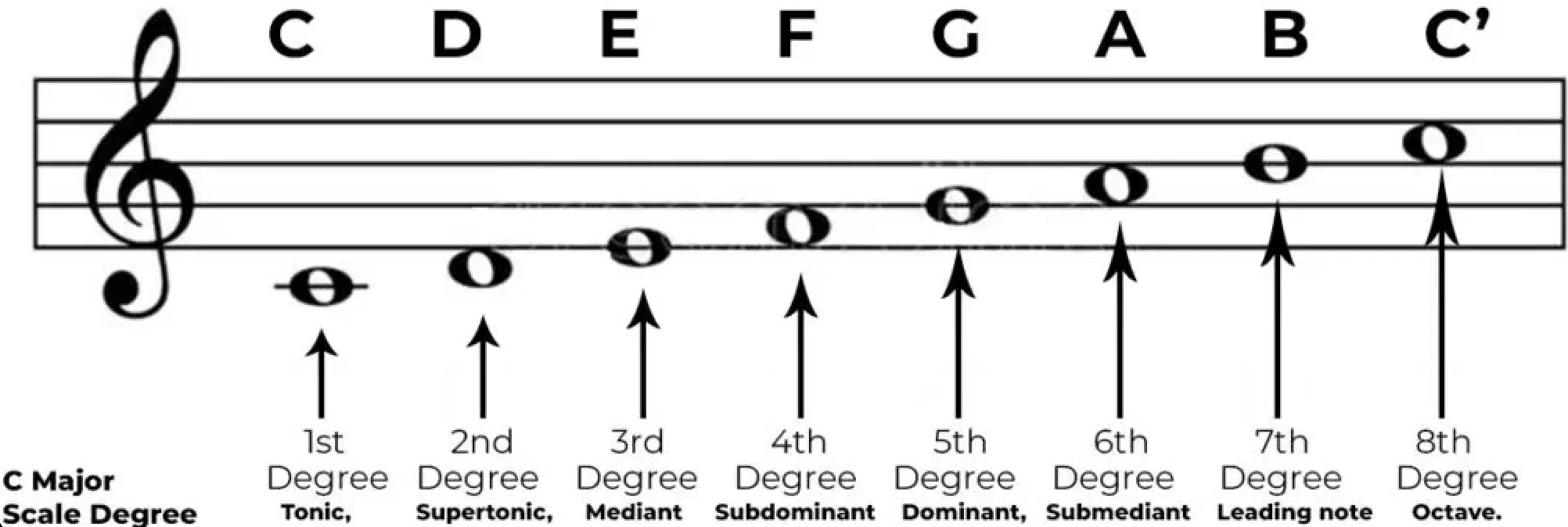
Major scales are all about brightness and joy.
Take the C major scale, for example, consisting of seven notes: C (first note), D, E, F (middle note), G, A, and B (last note).
The pattern of whole steps and half steps in a major scale creates a sense of happiness and positivity.
This pattern goes as follows:
- Whole step (tone)
- Whole step
- Half step (semitone)
- Whole step
- Whole step
- Whole step
- Half step
When you play a major scale, you’re engaging with a sound that’s been a staple in Western music for centuries.
In turn, it will stick with your listeners on a very subconscious level as well.
Each major scale has a unique character depending on its key signature, but the underlying emotional quality remains consistent.
For instance, the G major scale, with its single sharp, and the E major scale, with its four sharps, sound different but still retain that major ‘uplifting’ quality.
As a music producer, understanding these details helps in choosing the right scale for the mood you’re aiming to convey.
When talking about major scales, it’s not just about the notes themselves but their relative positions or scale degrees.
For example, the fifth scale degree in the G major scale (D) has a distinct role compared to the seventh scale degree (F#), known as the leading tone, which creates a sense of anticipation and leads back to the tonic note (G).
-
Exploring Minor Scales/Minor Scale Degrees
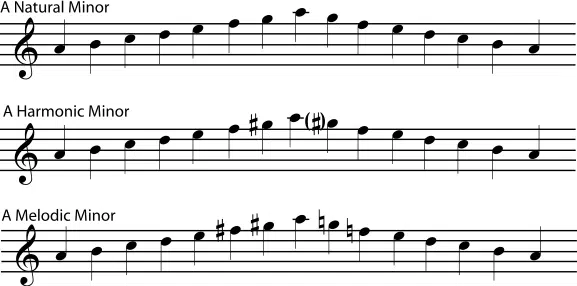
The minor scale, known for its emotional depth and complexity, is a staple in almost all popular music genres.
Unlike the bright and upbeat nature of major scales, minor scales usually convey a sense of:
- Sadness
- Mystery
- Intrigue
- Etc.
One key aspect of the minor scale is its scale degrees, which differ from major scales, particularly in their third, sixth, and seventh positions.
These minor scale degrees significantly influence the scale’s overall mood.
The natural minor scales, a prominent type of minor scale, follows a distinct pattern (whole, half, whole, whole, half, whole, whole) that sets it apart from its major counterpart.
In music production and songwriting, understanding minor scales and their unique qualities is vital.
Each degree of a minor scale, especially the important scale degree like the lowered third, contributes to its characteristic sound.
The flexibility and emotional range of minor scales makes them a go-to choice for producers and other musicians looking to infuse their tracks with depth and nuance.
Whether you’re working on a dope EDM track or a soulful ballad, the minor scales, with their distinct minor scale degrees, can help you get that deep emotion across.
-
The Major Scale vs Minor Scale: Emotional Impacts (Bonus)
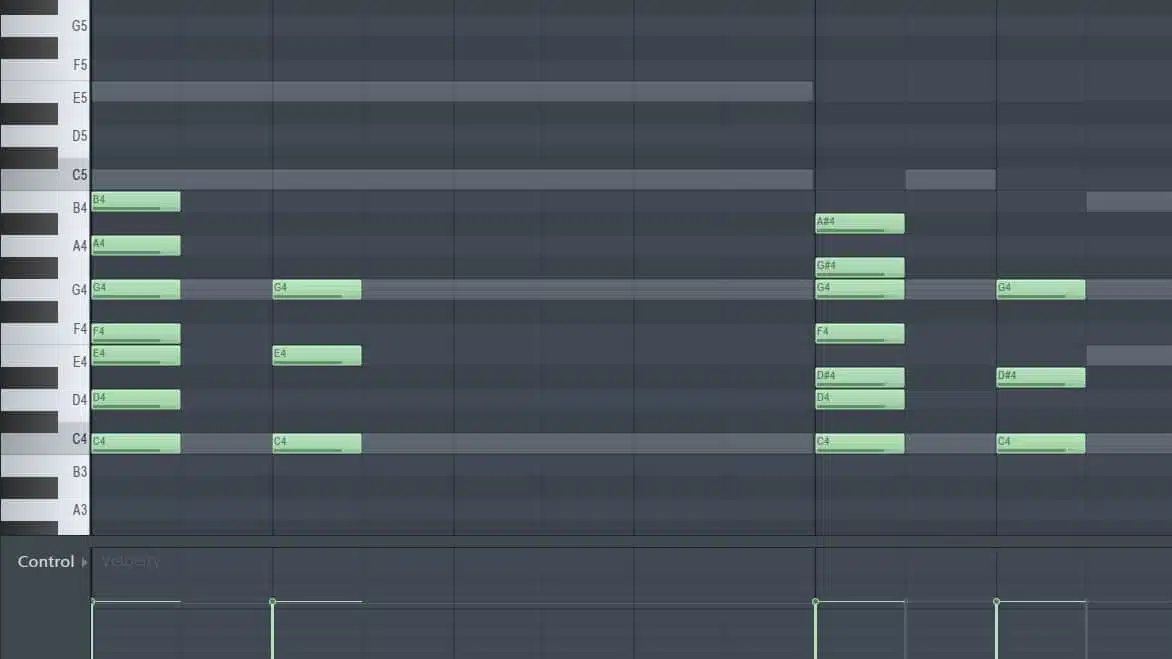
Comparing major and minor scales (like the natural minor scale) reveals their emotional impacts.
The major scale, with its sequence of whole and half steps, tends to evoke feelings of happiness and contentment, as we mentioned.
It’s no wonder major scales/major scale degrees are often the go-to for uplifting, feel-good music.
Minor scales, on the other hand, particularly the natural minor scale, often articulate sadness, introspection, or mystery.
This is why they are frequently used in genres like blues, certain types of rock, and pop music to convey deeper, more complex emotions that will hit those heartstrings.
The choice between a major and minor scale in production is more than just picking different notes…
It’s about setting the tone/vibe for your entire track (and what people will feel).
Your ability to leverage these scales effectively can make or break the emotional connection your music makes with the audience.
NOTE
In the Circle of Fifths, the tonal center of a major key is crucial.
It’s equally important in its relative natural minor scale, where it’s typically an octave higher and maintains the same tonal center.
If you’re not familiar with the Circle of Fifths or what a tonal center is, we’ve got you covered with our Music Theory article.
Exploring Different Scale Degrees
Transitioning to the exploration of individual scale degrees, let’s break down their roles and applications. This way, you’ll know all the scale degree names, different key signatures, and other music theory essentials.
-
The First Degree (Tonic)
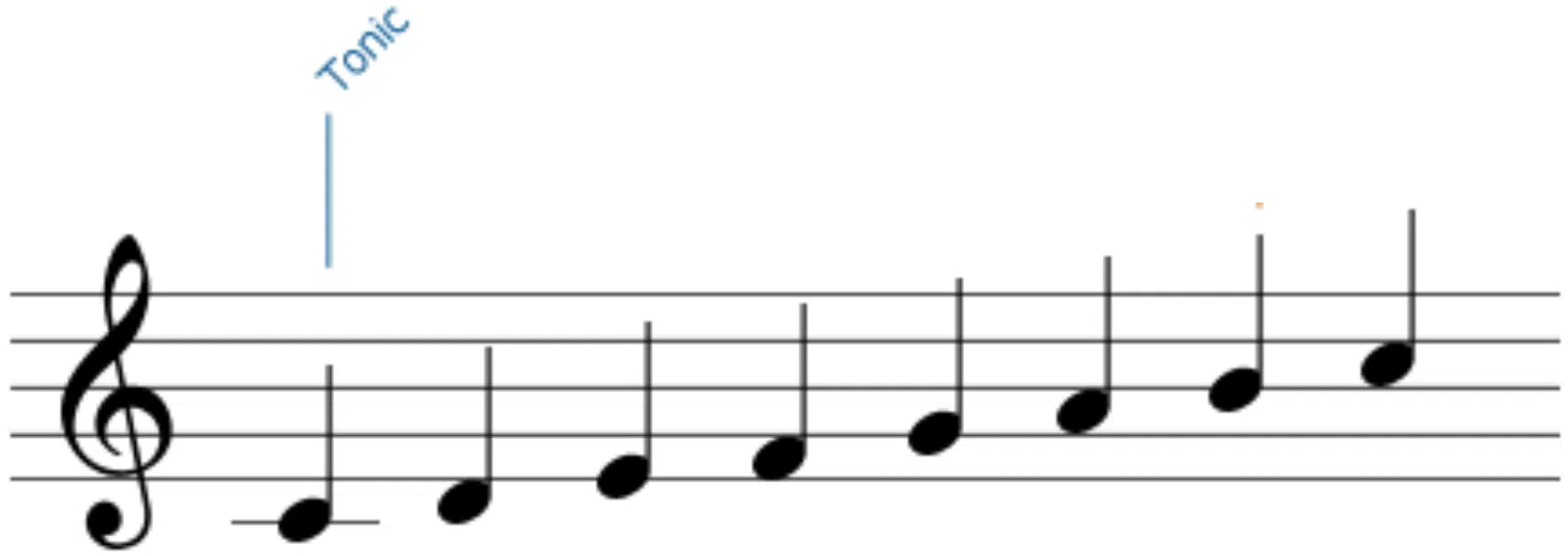
The first scale degree, known as the tonic, is the cornerstone of any musical composition.
In music, this first degree sets the stage, establishing the key and offering a sense of resolution and completion.
Understanding and effectively using the tonic (a very important note) is crucial.
It’s where a melody often finds its beginning and end, creating a musical journey that feels complete.
In a C major scale, for instance, the tonic note is the C, which provides a reference point for all other notes and chords.
The role of the first degree extends beyond just being a starting note 一 it’s the anchor of your musical piece.
When creating melodies or harmonies, the first scale degree serves as a home base to which other notes often resolve.
This pivotal role of the first degree of the scale in music production cannot be overstated.
It’s the key to creating music that’s harmonically sound and emotionally resonant.
-
The Second Scale Degree (Supertonic)
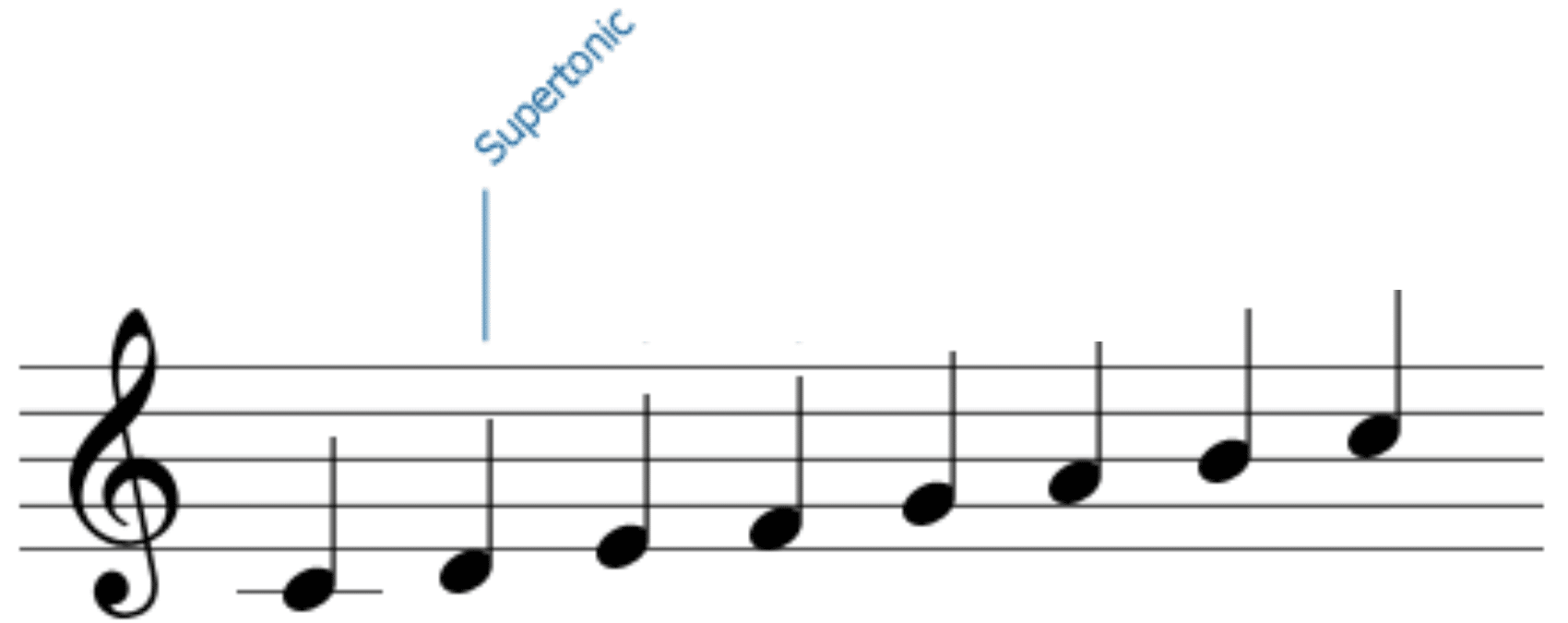
The second degree, also known as the supertonic, plays a key role in creating movement within a scale.
For example, in the C major scale, the second scale degree is D.
This second degree often acts as a stepping stone, leading to other notes and creating a sense of progression in your melody.
You can use the second scale degree to add anticipation or to smoothly transition between the tonic and other scale degrees.
-
The Third Degree (Mediant)
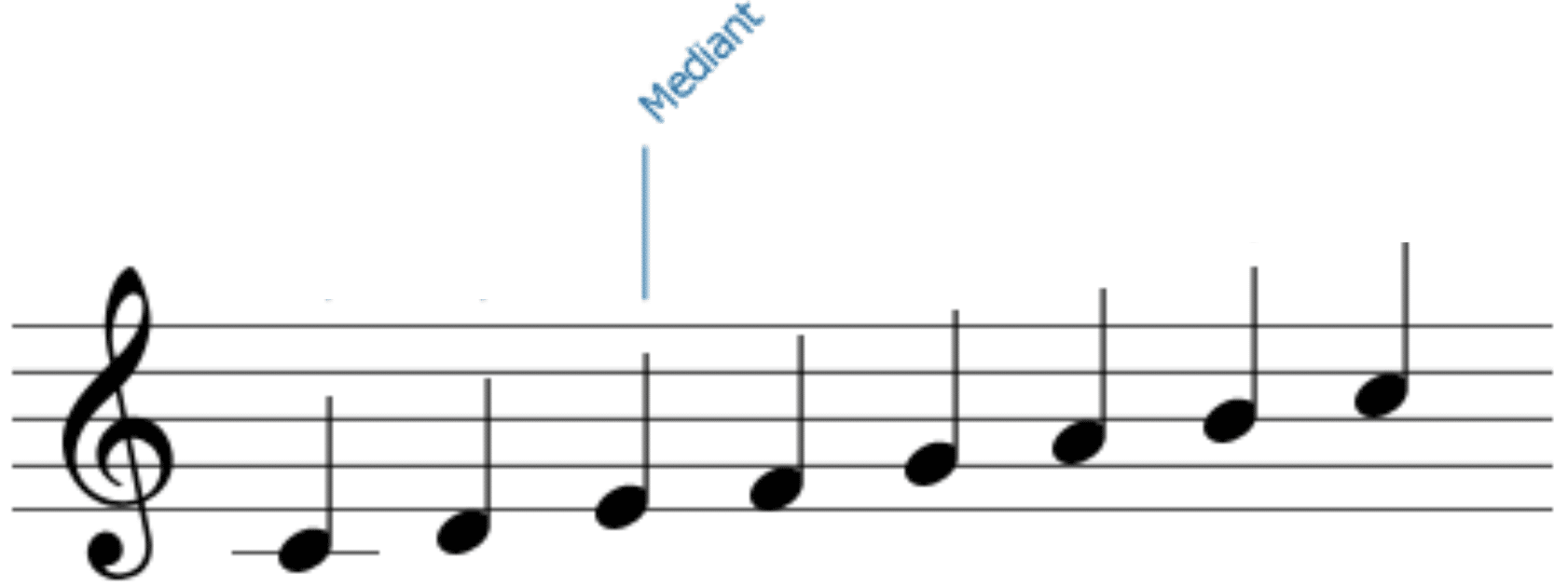
The third scale degree, known as the mediant, is where the music’s mode (major or minor) becomes clear.
In the C major scale, E is the mediant.
This third degree plays a pivotal role in establishing the overall vibe of the scale.
- In a major scale 一 The mediant adds to the scale’s brightness.
- In a minor scale (like A minor scale) 一 The mediant (C) contributes to a more somber feel.
The mediant is often a pivot point in melodies and chord progressions.
An example would be a song that shifts from a C major chord (the three notes C-E-G) to an A minor chord (the three notes A-C-E).
Here, the E one note (mediant in C major) acts as a common tone that seamlessly bridges the shift between the two chords.
-
The Fourth Scale Degree (Subdominant)
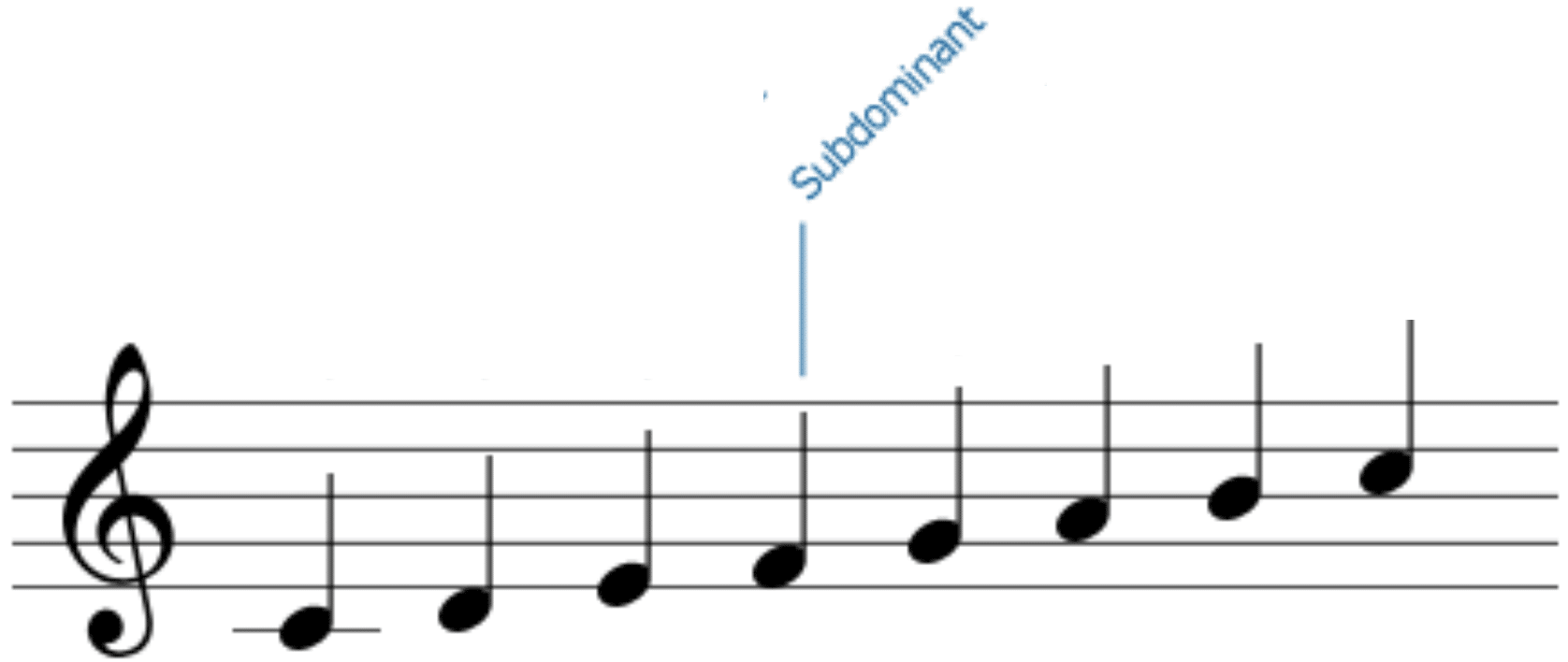
The fourth scale degree (subdominant, if we’re talking technical names), it introduces a contrasting but complementary element to your scale.
In the C major scale, this fourth degree is F.
It’s particularly useful in establishing a shift in your music’s direction.
For example, a chord progression that moves from the tonic (C) to the subdominant (F) introduces a sense of openness before resolving back to the tonic or moving to the dominant.
-
The Fifth Degree (Dominant)
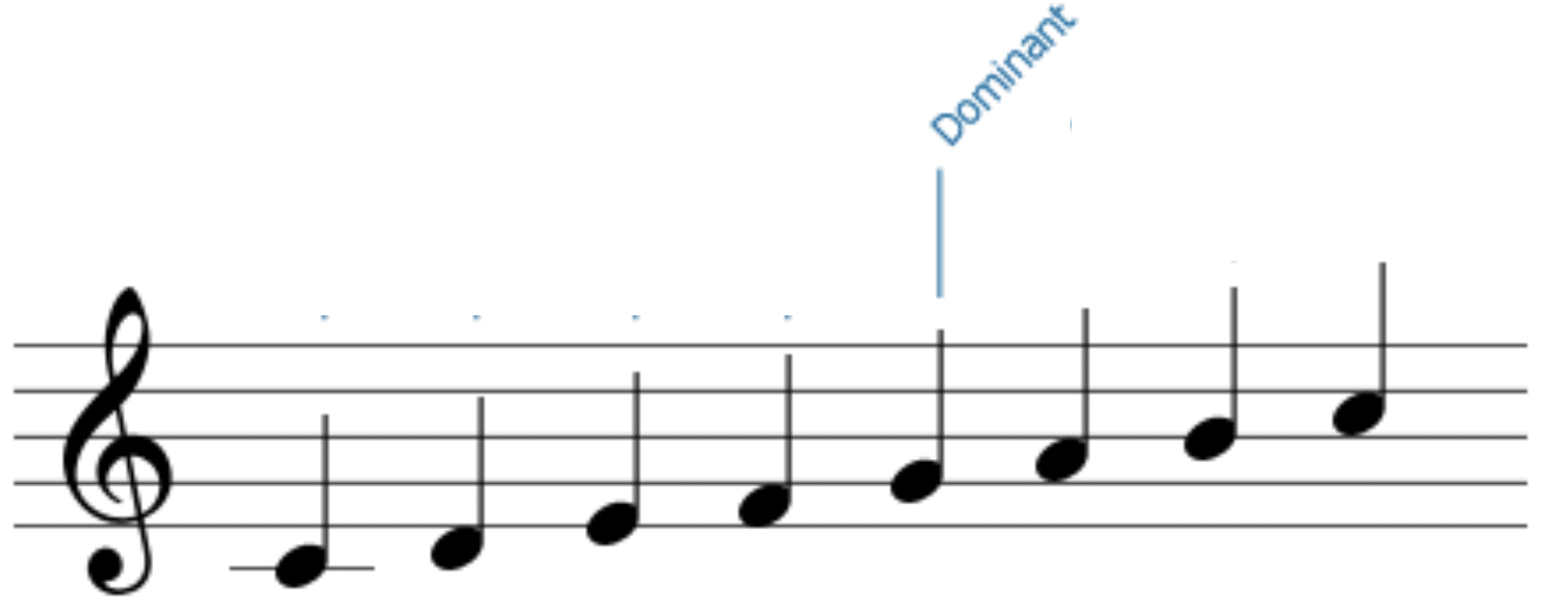
The fifth scale degree, known as the dominant, is critical for creating tension and expectation in music.
In the C major scale, the dominant is G.
It has a natural tendency to resolve back to the tonic 一 making it one of the most important scale degrees in Western music.
The dominant’s role can be observed in the classic V-I (five-one) progression, where a chord built on the fifth scale degree resolves to a chord on the first scale degree.
For instance, in C major, a progression from G major to C major would exemplify this.
This movement is a staple in various genres, driving the sense of movement and resolution in compositions.
-
The Sixth Scale Degree (Submediant)
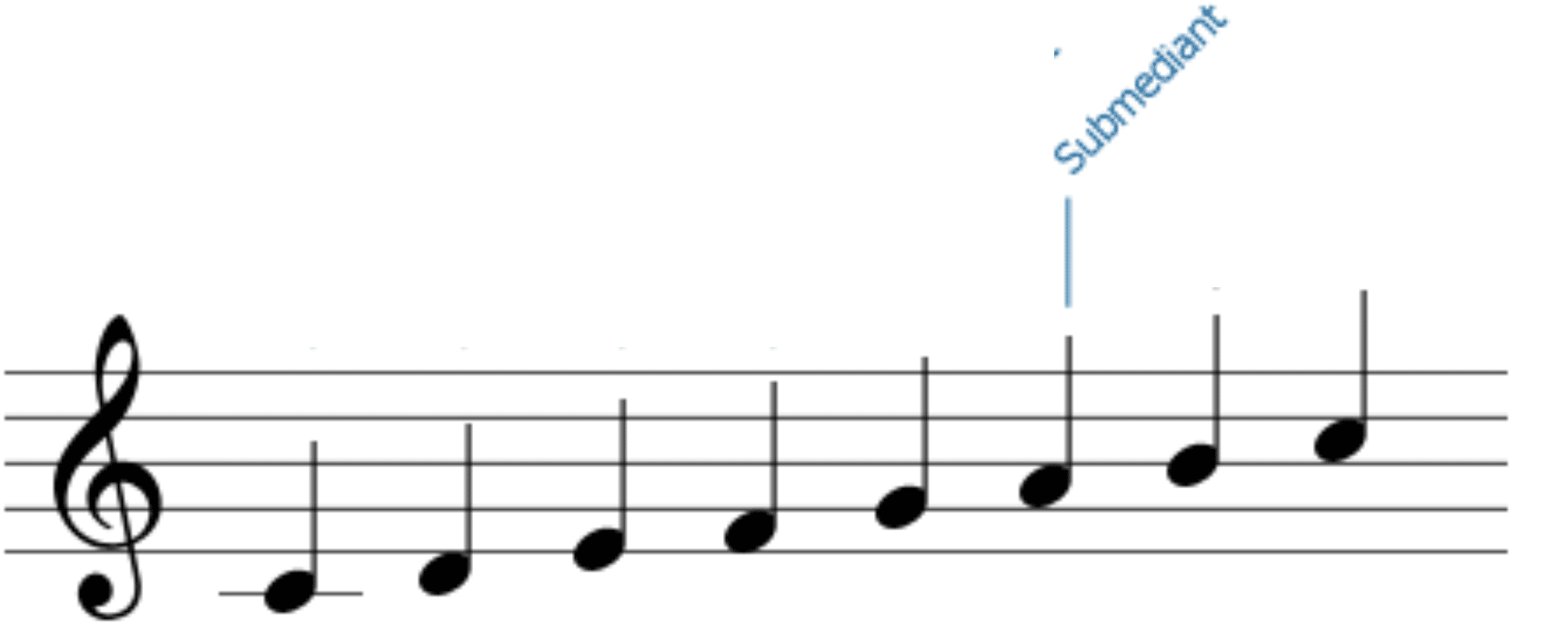
The sixth scale degree, or the submediant, adds a unique color and emotional depth to a scale.
In the C major scale, the sixth scale degree is A.
This scale degree often provides a softer, more introspective quality to a piece, especially when used in chord progressions or melodic lines.
For example, in a C major context, moving from the tonic to the submediant can create a sense of longing 一 perfect for evoking deeper emotions.
-
The Seventh Degree (Leading Tone)
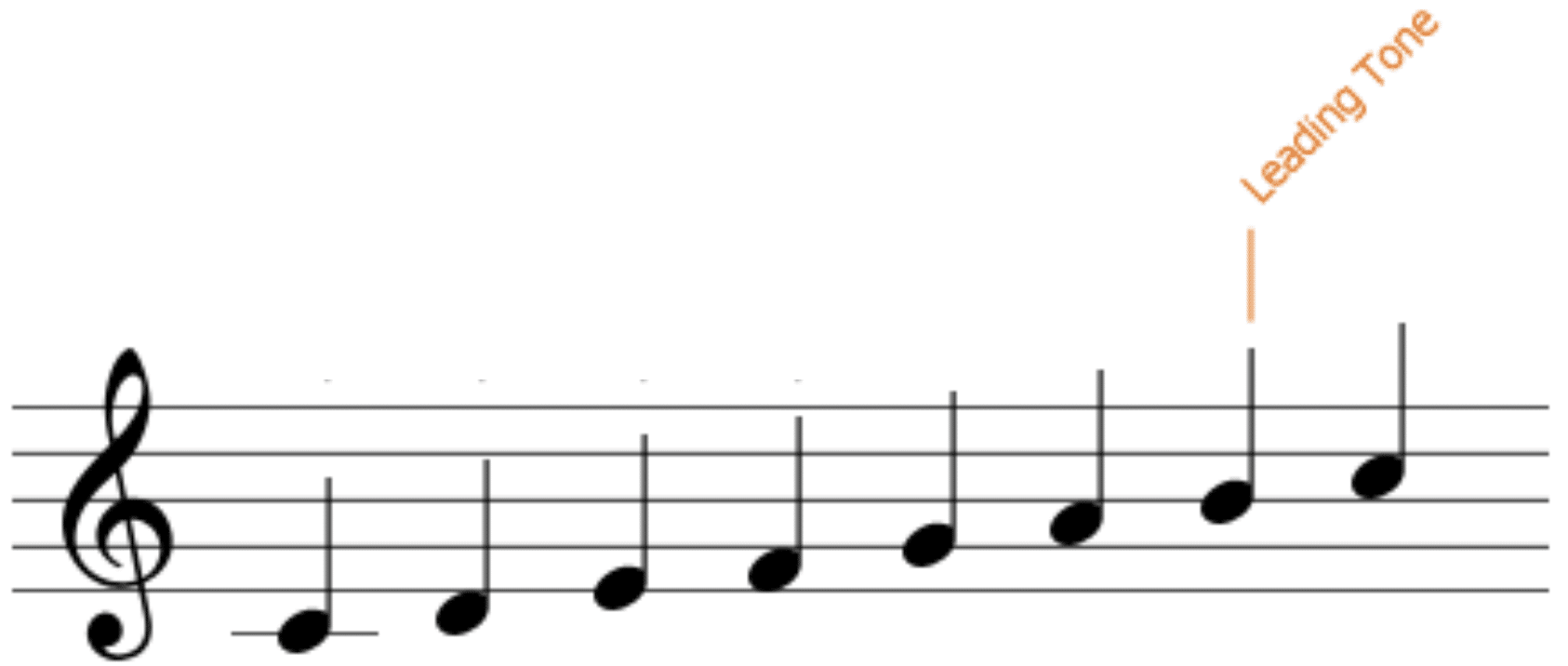
The seventh scale degree, the leading tone, is a half-step lower than the tonic and creates a strong pull towards it.
In the C major scale, the leading tone is B.
It’s often used at the end of phrases to signal an impending return to the tonic, offering a sense of completion (remember, it’s all about that tension and release).
In production, using a leading note in your melodies can create anticipation.
For example, a melody that climbs up the C major scale degrees and pauses on the B note of the scale (leading tone) before resolving to C (tonic) can be a powerful tool for creating musical suspense and release.
Scale Degrees in Action
Exploring how scale degrees function in various musical contexts/genres reveals their versatility and importance in digital music production. Once you get familiar with each scale degree name, you’ll instantly be able to recognize their role.
-
Scale Degrees in Melody Making

Each degree of the scale brings its own flavor and emotional impact when it comes to melody-making.
For example, using the leading tone (seventh scale degree) in a melody can create a sense of anticipation.
This will urge the listener towards the resolution that typically comes when reaching the tonic (first scale degree).
A classic example in many popular songs is the use of the leading tone in a verse 一 building tension before resolving to the tonic in the chorus.
Consider the C major scale in melody construction.
The use of the third scale degree (E in C major) can determine the mode of your melody, giving it either a major (happy) or minor (sad) feel.
Similarly, incorporating the dominant (fifth scale degree, G in C major) can provide a sense of stability and satisfaction.
NOTE: This is evident in countless melodies where the fifth degree forms the peak of a phrase before resolving.
When it comes to harmonization, scale degrees help in creating chords that complement your melody.
For example, in the C major scale, harmonizing the first note (C, the tonic note) with a triad chord (the three notes C-E-G) establishes a solid foundation.
The fourth scale degree (F in C major) can be harmonized to introduce a sense of departure, leading nicely into the dominant.
-
Rhythmic Variations
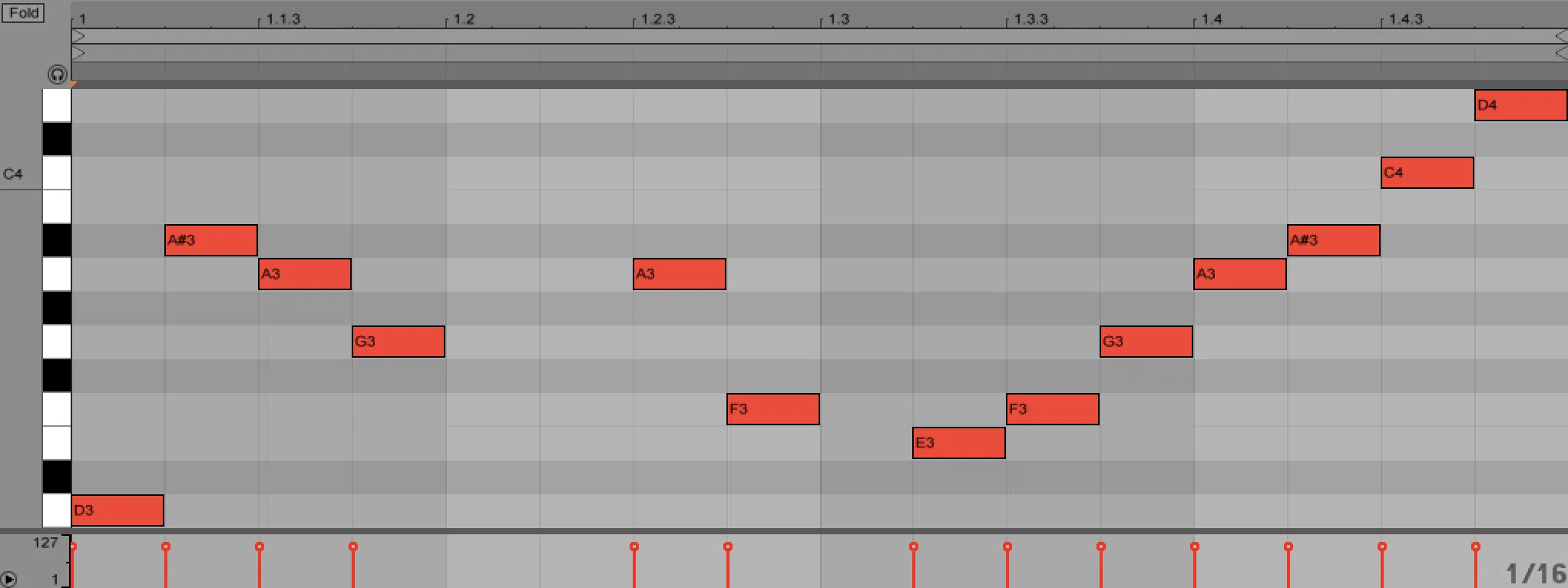
The degree of the scale can also influence the rhythmic aspect of your music.
By emphasizing certain scale degrees on strong beats, you can create a specific groove or feel.
For instance, consistently landing on the dominant (fifth scale degree) on the downbeat can establish a sense of forward motion and drive in your rhythm.
Alternatively, using off-beat accents on less stable scale degrees like the second degree or sixth degree creates syncopation.
NOTE: This is a key element in genres like funk and EDM.
This technique can inject energy and a sense of unpredictability into your rhythms with each important note.
Final Thoughts
And there you have it… scale degrees in a nutshell.
Now you can see that just one note can dramatically alter the mood and direction of your music.
And, by understanding scale degrees, it can elevate your music production skills and creativity like a true professional.
It allows you to weave through scales with ease, enabling you to produce music that actually makes an impact.
An invaluable, highly-renowned tool that can further enhance your understanding of scales, chords, and, of course, scale degrees, is this legendary MIDI Chord Pack.
This comprehensive pack includes 1,200 Drag & Drop MIDI Files 一 offering a complete folder of every fundamental chord & chord progression in existence.
With this packs, the possibilities are endless, which makes it easier to apply the topics we covered today.
It will not only save you time but also deepens your knowledge of music theory by providing instant access to a wide range of chords and progressions.
This can be incredibly beneficial when working with scale degrees, as it allows you to experiment with unique and irresistible harmonic variations.
Whether you’re looking to compose intricate melodies, harmonize your tracks effectively, or simply gain a better understanding of musical structures, this chord pack is the answer.
So, go use your newfound knowledge (and the MIDI pack, of course) to create emotionally-charged tracks that will make a powerful statement.
Until next time…







Leave a Reply
You must belogged in to post a comment.